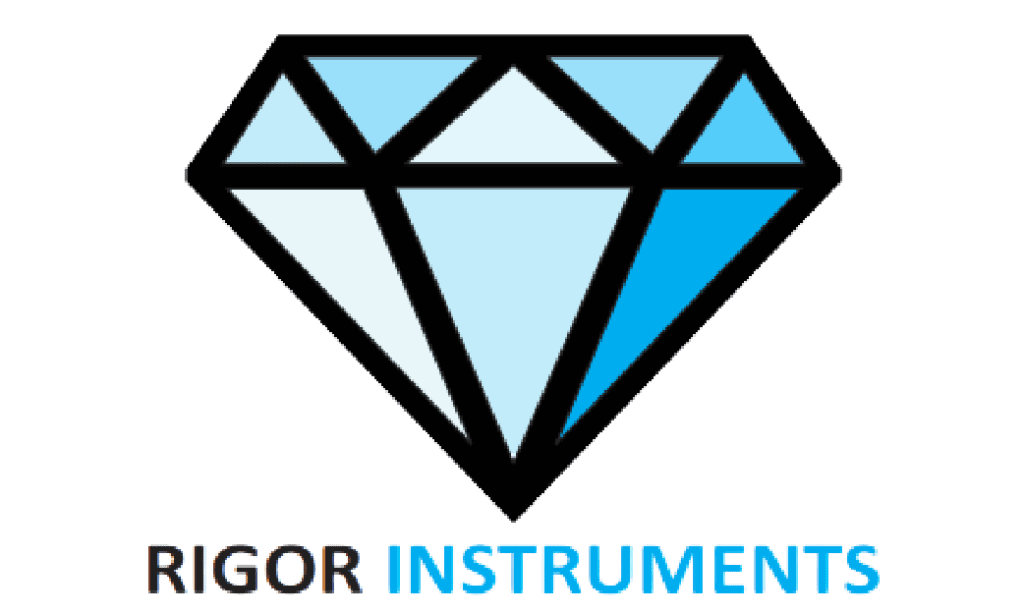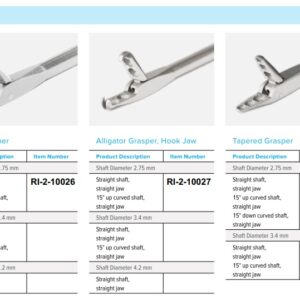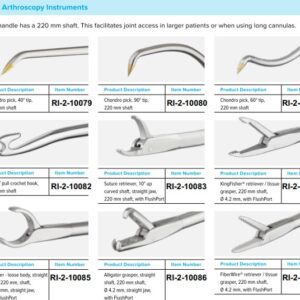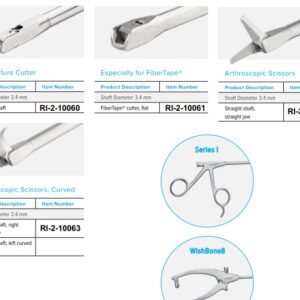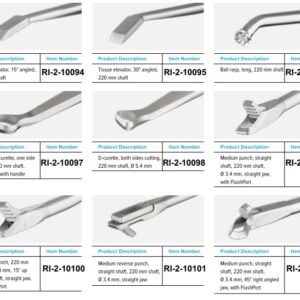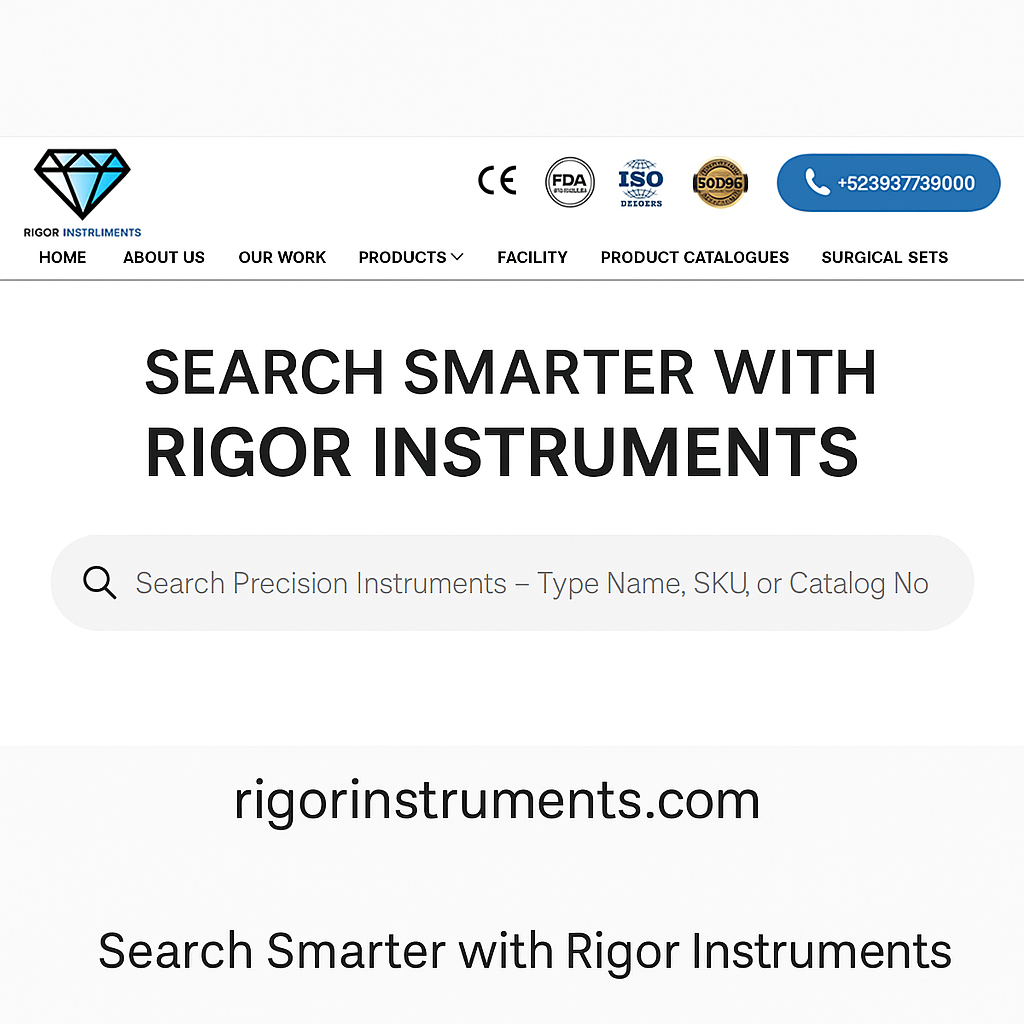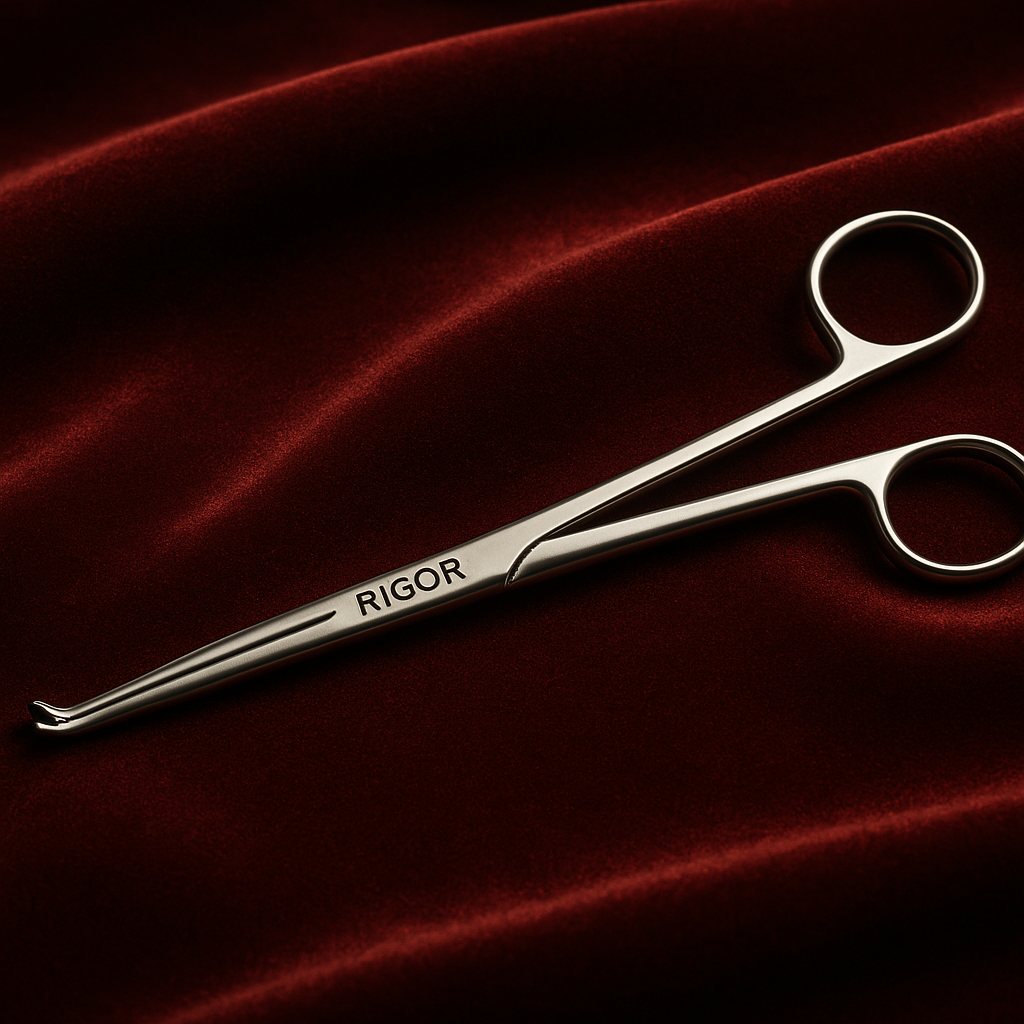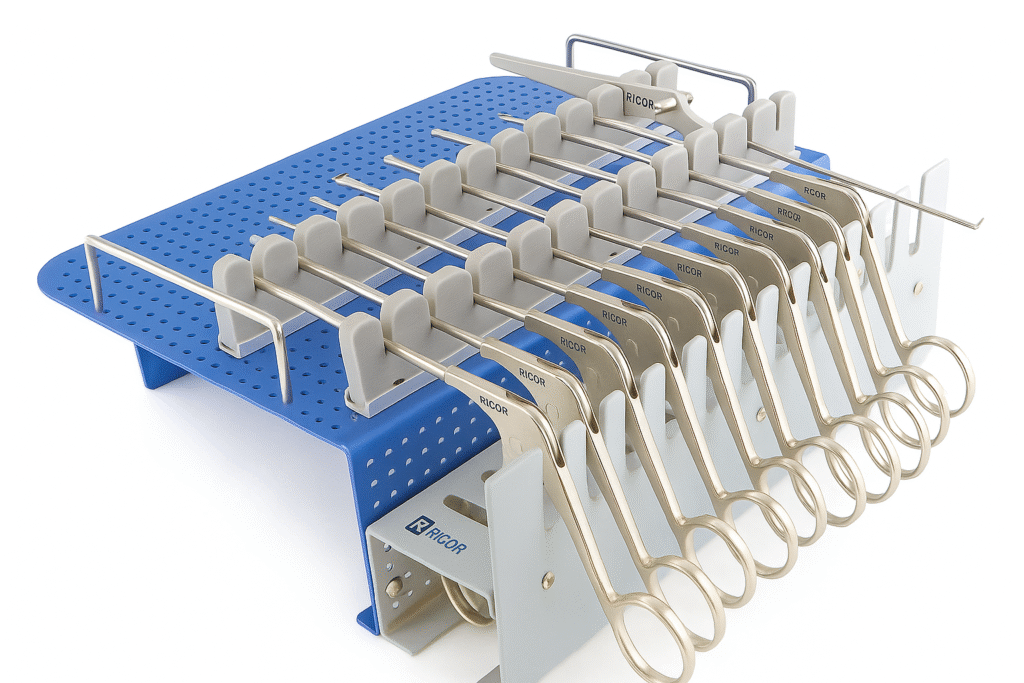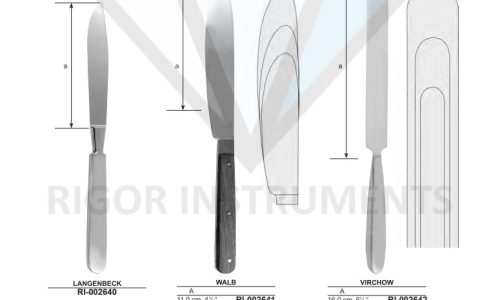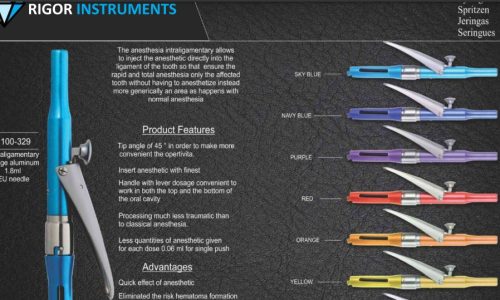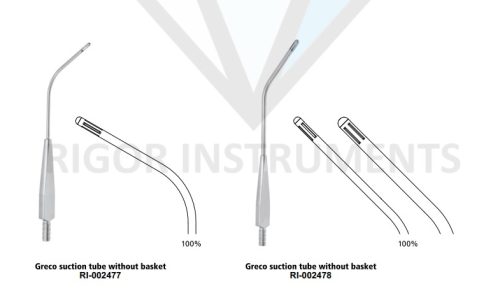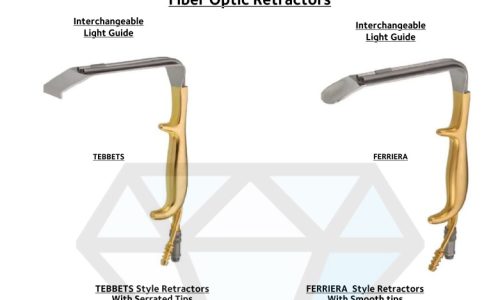Arthroscopic Surgical Instruments
-
Sale!

ACL / Loose Grasper – Shaft Diameter 4.2mm, Straight Jaw, Straight Shaft – Arthroscopic Surgical Instrument (RI-2-10030)
$130.00Original price was: $130.00.$125.00Current price is: $125.00. View More -
Sale!

Alligator Grasper, Hook Jaw – Shaft Diameter 2.75mm, Straight Jaw, 15 Degree Up Curved Shaft – Arthroscopic Surgical Instrument (RI-2-10027)
$130.00Original price was: $130.00.$125.00Current price is: $125.00. View More -
Sale!

Alligator Grasper, Hook Jaw – Shaft Diameter 2.75mm, Straight Jaw, Straight Shaft – Arthroscopic Surgical Instrument (RI-2-10027)
$130.00Original price was: $130.00.$125.00Current price is: $125.00. View More -
Sale!

Alligator Grasper, Hook Jaw – Shaft Diameter 3.4mm, Straight Jaw, 15 Degree Up Curved Shaft – Arthroscopic Surgical Instrument (RI-2-10027)
$130.00Original price was: $130.00.$125.00Current price is: $125.00. View More -
Sale!

Alligator Grasper, Hook Jaw – Shaft Diameter 3.4mm, Straight Jaw, Straight Shaft – Arthroscopic Surgical Instrument (RI-2-10027)
$130.00Original price was: $130.00.$125.00Current price is: $125.00. View More -
Sale!

Alligator Grasper, Hook Jaw – Shaft Diameter 4.2mm, Straight Jaw, 15 Degree Up Curved Shaft – Arthroscopic Surgical Instrument (RI-2-10027)
$130.00Original price was: $130.00.$125.00Current price is: $125.00. View More -
Sale!

Alligator Grasper, Hook Jaw – Shaft Diameter 4.2mm, Straight Jaw, Straight Shaft – Arthroscopic Surgical Instrument (RI-2-10027)
$130.00Original price was: $130.00.$125.00Current price is: $125.00. View More -
Sale!

Alligator Tissue Grasper, Straight 220mm Shaft, Straight Jaw, 4.2mm – Arthroscopic Surgical Instrument (RI-2-10086)
$150.00Original price was: $150.00.$145.00Current price is: $145.00. View More -
Sale!

Alligator Tissue Grasper, Straight 220mm Shaft, Straight Jaw, 4.2mm, With FlushPort – Arthroscopic Surgical Instrument (RI-2-10086)
$150.00Original price was: $150.00.$145.00Current price is: $145.00. View More -
Sale!

Arthroscopic Scissor, Shaft Diameter 3.4mm – Arthroscopic Surgical Instrument (RI-2-10062)
$160.00Original price was: $160.00.$155.00Current price is: $155.00. View More -
Sale!

Arthroscopic Scissor, Shaft Diameter 3.4mm, Curved – Arthroscopic Surgical Instrument (RI-2-10063)
$160.00Original price was: $160.00.$155.00Current price is: $155.00. View More -
Sale!

Arthroscopic Scissor, Shaft Diameter 3.4mm, Straight Shaft, Left Curved Jaw – Arthroscopic Surgical Instrument (RI-2-10063)
$160.00Original price was: $160.00.$155.00Current price is: $155.00. View More -
Sale!

Arthroscopic Scissor, Shaft Diameter 3.4mm, Straight Shaft, Right Curved Jaw – Arthroscopic Surgical Instrument (RI-2-10063)
$160.00Original price was: $160.00.$155.00Current price is: $155.00. View More -
Sale!

Arthroscopic Scissor, Shaft Diameter 3.4mm, Straight Shaft, Straight Jaw – Arthroscopic Surgical Instrument (RI-2-10062)
$160.00Original price was: $160.00.$155.00Current price is: $155.00. View More -
Sale!

Ball Rasp, 220mm Shaft – Arthroscopic Surgical Instrument (RI-2-10096)
$88.00Original price was: $88.00.$85.00Current price is: $85.00. View More -
Sale!

Ball Rasp, Long, 220mm Shaft – Arthroscopic Surgical Instrument (RI-2-10096)
$88.00Original price was: $88.00.$85.00Current price is: $85.00. View More
Surgical Instruments Blog
Precision Engineered: Custom-Made Atraumatic DeBakey Clamps Designed by a Surgeon At Rigor Instruments, innovation begins with one principle: listen to the surgeon. When a highly experienced cardiovascular surgeon approached us
Why Rigor Instruments Invested in Smart Product Search — And Why It’s the Future of Surgical Buying In a crowded digital world, buyers don’t want to browse — they want
One-Stop Surgical Instrument Sourcing: Why Rigor Instruments is the Complete Solution You’ve Been Searching For When Quality Meets Convenience — Rigor Delivers For decades, international buyers have faced
Reusable vs. Single-Use Surgical Instruments: Why RIGOR Stands Firm on Reusables In the fast-paced world of modern surgery, the conversation around single-use vs. reusable surgical instruments is louder than ever.
Laryngeal Forceps: Precision Tools for ENT & Airway Procedures Laryngeal forceps are specialized surgical instruments used in ear, nose, and throat (ENT) and laryngological procedures. These forceps are designed for
Mastering Arthroscopy Punches: Types, Surgical Uses & Rigor’s CNC Precision Leadership Arthroscopy is a minimally invasive surgical procedure that requires tools of extreme precision—and none more important than the arthroscopy
What are Arthroscopic Surgical Instruments

Orthopedic surgeons now have minimally invasive techniques to diagnose and treat a variety of joint disorders thanks to the invention of arthroscopic surgical instruments. Compared to conventional open surgery, this cutting-edge method allows for smaller incisions, quicker healing times, and less post-operative discomfort. Here we will discuss the realm of arthroscopic surgical instruments and examine their types, uses, and advantages for patients.
An arthroscope, a small, flexible fiber-optic device containing a light source and a camera, is used during arthroscopy, a surgical technique. A tiny incision is used to insert the arthroscope into the joint, which enables the surgeon to view the interior structures on a monitor in real time. As a result, diseases including torn ligaments, damaged cartilage, and joint inflammation may be precisely diagnosed and treated.
Types of Arthroscopic Surgical Instruments
The arthroscope itself is one of the basic arthroscopic surgical instruments. It has a lens system and a light source at one end of a long, thin tube. The arthroscope can accommodate a variety of joints, including the knee, shoulder, ankle, and wrist, in a variety of sizes and angles. The arthroscope’s camera takes high-resolution pictures of the inside of the joint, allowing the surgeon to spot anomalies and formulate the best course of action.
The graspers and probes are another crucial set of tools used in arthroscopic surgery. The surgeon can move and hold tissues inside the joint with the use of graspers, which are narrow devices having pincers at the ends. In contrast, probes are little, pointed tools that are used to examine the joint’s architecture, evaluate the health of the tissues, and pinpoint particular regions of interest. During the surgery, the surgeon may move and completely inspect the joint thanks to these tools.
Arthroscopic surgery also uses cutting and shaving tools in addition to graspers and probes. Injured tissue, such as ripped menisci or frayed cartilage, can be removed or reshaped using shaving equipment, which has a spinning blade. They work in tandem with suction to rid the joint of debris and provide the surgeon a clear look. Various blades and accessories are available with motorized shaver systems, enabling surgeons to remove tissue with control and precision.
The suturing devices used in arthroscopic surgery are used to make repairs inside the joint. Reattaching ligaments or tendons to the bone with suture anchors offers rigidity and speeds up the healing process. Sutures are used to attach the tissue to these anchors once they have been introduced into the bone. Suture-passing tools make it easier to accurately apply sutures across constrictive areas of the joint, ensuring a solid fixation throughout the surgery.
Advantages of Arthroscopic Surgical Instruments
Recent developments in arthroscopy technology have paved the way for the creation of specialized devices designed for certain joint surgeries. The Bankart repair system and the rotator cuff repair kit, for instance, are equipment used in shoulder arthroscopy to address common shoulder problems. By incorporating cutting-edge features like pre-loaded sutures, movable anchors, and specialized guidance systems, these devices improve the accuracy and effectiveness of surgery.
The advantages of arthroscopic surgical instruments are numerous. First of all, because arthroscopy is less invasive, it leaves smaller incisions, which lowers the risk of infection and scarring. Additionally, this method results in less tissue stress, which lessens post-operative discomfort and expedites patient recovery. Additionally, arthroscopic cameras’ increased visibility helps surgeons to carry out more accurate treatments, improving surgical results and minimizing problems.
Arthroscopy also enables early identification and treatment of joint problems. Surgeons might possibly eliminate the need for more intrusive treatments by recognizing and treating problems in the early stages. This method allows for a rapid return to sports and activities, which is useful for sportsmen and other active people.
Why Arthroscopic Surgical Instruments
Arthroscopic surgical tools have transformed orthopedic surgery by giving doctors minimally intrusive means of identifying and treating joint disorders. These equipment, which range from arthroscopes and graspers to shavers and suturing tools, enable accurate visualization, manipulation, and repair of internal joint structures. Because of their many advantages, such as smaller incisions, less discomfort, quicker recovery, and better surgical results, arthroscopic surgery has gained popularity among both patients and doctors. We may anticipate significant improvements to arthroscopic tools as technology develops, improving patient outcomes and broadening the range of arthroscopic treatments.
Why Rigor Instruments
High-quality surgical instruments are essential to the success of any procedure, no matter how straightforward or difficult it may be for the patient, and this is where Rigor Instruments can help you.
Rigor is a second-generation surgical instruments manufacturer and supplier from Sialkot Pakistan providing best quality in Arthroscopic Surgical Instruments since 1985.
Our exquisite quality and competitive pricing has given us great competitive advantage in the global surgical instruments market. Our ambition is to become a leader in international market in Arthroscopic Surgical Instruments.
Have a glance at our wide range of Arthroscopic Surgical Instruments with details,
